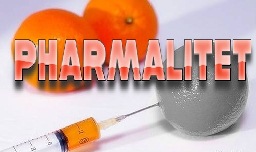Let's analyze
where these resources are being pumped. Let's take a look on the typical development
process:

Here we have
huge holes where money is disappearing:
1. Cellular and
genetic targets – in order to start the development the targets
have to be specified. Well, I can argue that there are a lot of efficient
drugs out there with unknown mechanism of action, so this step can be
successfully omitted.
2. Genomics –
very huge hole. The idea “gene – protein – drug” or “key-and-lock” is extremely
simplified, mechanistic and not scientific anymore.
3. Proteomics –
the same situation as for genomics.
4. Bioinformatics
– I think that this discipline was invented exclusively in order to find out
any possible application of enormous bunch of the data from genomics,
proteomics etc.
5. Now we came
to synthesis and isolation – very classical step in drug development process.
But wait a minute – it is not the same synthesis anymore, it is not enough to
synthesize and isolate a putative drug candidate – it is too simple! In modern
epoch everything has to be automated and scaled up, therefore huge libraries of
hundreds or thousands of compounds are produced by approach known as
“combinatorial chemistry”.
6. Combinatorial
chemistry – a perfect tool to consume huge amount of money and time. And it
gives rise of huge amount of crude compounds which are tested then on different
types of assays.
7. Assay
development – well, it sounds scientific – and this process, guess what? - need
also certain amount of resources!
8. HTS – this
is the crown of the whole concept – it is very often fully automated process
which is always presented in action to the attention of investors during their
visits to the drug development companies (I have this experience! This technique
is really amazing)
9. Library
development we have already discussed in §6.
10. Structure-activity-studies
(also known as SAR) – this is completely alchemical or star-counting process
which is beyond any rational understanding. Here basically can be spent any
possible amount of resources: $1M or $100M – only fantasy matters!
11. In silico
screening – well, there are a lot of mathematicians out there, they need job
and this field is specially invented to provide these job positions for
mathematicians. Nobody cares and even understands the results of their
calculations. There is no any rational how their numbers can be used in drug
development.
12. And finally,
we came to the classical chemical synthesis.
13. Drug
affinity and selectivity – but who said that drug has to work selectively on
special target??? If it doesn’t work selectively on a special target but have a
hundred of different targets, does this drug have any chance to be an efficient
medicine? The current paradigm has to say “NO”!
14. Cellular disease
model – it is relevant only for the minority of diseases.
15. Mechanism of
action – so the drug is efficient if we understand the mechanism of its action?
- It is bogus.
16. It is very
broad statement, let’s skip it.
17. And finally
we came to in vivo. Here according to my understanding starts the real and
productive science!
Well,
you see and understand now why the process of drug development is so expensive!
It is necessary to pay all the way for points 1-11 to fit your product in the
modern paradigm. Then it is possible to brag that the drug has special
mechanism of action, it selectively targets a receptor X and deactivates mechanism
Y etc etc. But it has nothing to do with the Evidence Based
Medicine – the ontology of the drug action which probably our last
safeguard.


No comments:
Post a Comment